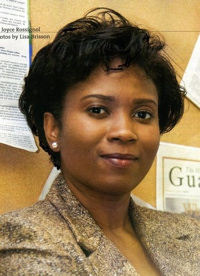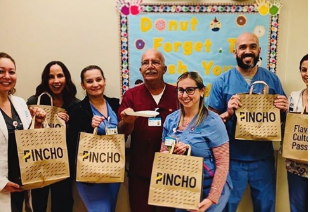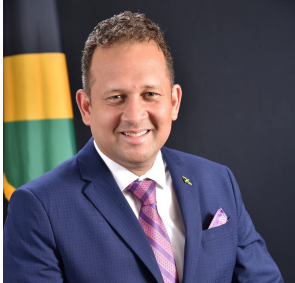OpEd: Too Many New York West Indians Numb to Vicious Slander and Rebuff by NY Police
By Dr. Ann-Marie Adams
NEW YORK – I had to pause.
That’s because a veteran Caribbean-American magazine publisher said that an article about a few New York Police officers’ comments on Facebook, “drop a bomb and wipe them all out,” received a “eh” and a shrug from most in the city’s West Indian community.
“We already know how they feel about us,” he said at a plenary session during the National Association of Caribbean-American Journalists’ third biennial regional conference at The New York Times’ building on June 1.
Yes, he has a long history in the community and might be unfazed by such things—as most veteran, hard-nosed reporters are. Or he might have chosen not to use precious energy on a few bad apples in the police department because “we have a good relationship with the police.”
I understand.
But I saw the face of a man anesthetized to the psychological and physical assault meted out to a whole community in the New York region and beyond. This kind of behavior has happened so many times, they said, they have become numb to the idea of a response. So they carry on with their parties.
That’s a disturbing message sent to the more than one million people who have enjoyed the yearly Labor Day West Indian American Day Carnival on Eastern Parkway . Many are residents of New Jersey and Connecticut. They consist of revelers from the Francophone, English and Spanish speaking islands—pushed out by economic factors and geopolitics in the Western Hemisphere since the turn of the twentieth century.
Each year, they join the parade as it meanders through the black community in Brooklyn, which comprises of predominantly African American, Caribbean Americans and Continental Africans. It is believed that one in every four Blacks have a Caribbean background because of the centuries of migration that began in the 18th century.
According to the 2011 U.S. Census, of the estimated 20 million people in New York, about 17 percent, or 3.4 million, are Blacks. With visitors and other ethnic groups in attendance, New York holds the largest carnival in the U.S.
However, the size of the parade “causes anxiety” on the part of those who have to monitor it.
Although Carnival had its origins in Harlem in the 1920s because of Jessie Waddell, a parade to celebrate the islands’ Independence began in 1963 in Hartford, CT. Jamaica and Trinidad gained independence in 1962. Some West Indians distinguish Carnival from a West Indian Independence Day parade. Trinidadians and several islands stress Carnival. Jamaicans and others stress Independence parade. Although this divides the community, most Caribbeans coalesced around having a joint parade and carnival. And that has been the case since the 1960s.
I refused to believe that most of those people who have attended the Labor Day Carnival, and those who make a chunk of the more than $200 million generated in economic activity for the city, heard about this threat to their lives and their livelihood. It might be they don’t read the Times but rather read the ethnic papers, which write about news that matter to them and their families in the U.S. and the Caribbean. N online search, however, showed no mention of these comments in these ethnic papers. Thus, the primary goal of the NACAJ regional conference was to bring awareness.
A threat to “drop a bomb and wipe them all out” is never “old news.” It has far-reaching implications for those who travel to New York and for those who remember 9/11.
At least one community leader recognized the gravitas of this NACAJ moment and seized it to voice her concerns among dozens of people with the power to give her community a voice.
“We are not naïve. We do know [anti-West Indian sentiment] exist. We know that it’s ignorant. But we were shocked at the audacity to put it out there, “said Yolanda Lezama-Clark, former president of the West Indian American Day Carnival Association (WIADCA) and the daughter of the late Carols Lezama who popularized the event. His daughter didn’t need a hand-delivered invitation to the NACAJ meeting. She recognized the importance of the discussion in the current economic climate suffused with anti-immigrant sentiments.
That is the exemplary response expected from our community leaders, and it is a voice the NYT’s editors and reporters could have sought out if they had those contacts in their rolodex.
As someone who prides herself on being on the ground and close to the community, I’m aware that the ethnic press almost always gets the story first. That’s why most “mainstream” reporters worth their salt read ethnic papers. So I was not enamored by the NYT’s run of the article. But here’s an undeniable fact: The NYT reaches more than a million across the nation and the Western Hemisphere. It broadcasts the news to people like me who don’t live in New York but often travel and do business in the city.
In the news business, we call that impact and reach.
Maybe some jaded reporters need to rediscover what constitute news. There are many dimensions of news. Here’s one to consider: News is something that matters to a community. In this case, the NYT’s Dec. 5 article will always be relevant news—with legs—to us.

Dr. Ann-Marie Adams is an award winning journalist and founder of TheHartfordGuardian.com. She is also the founder and former president of the National Association of Caribbean-American Journalists. Follow her on twitter @annmarieadams, or on Facebook.com/annmarie.adams.39




